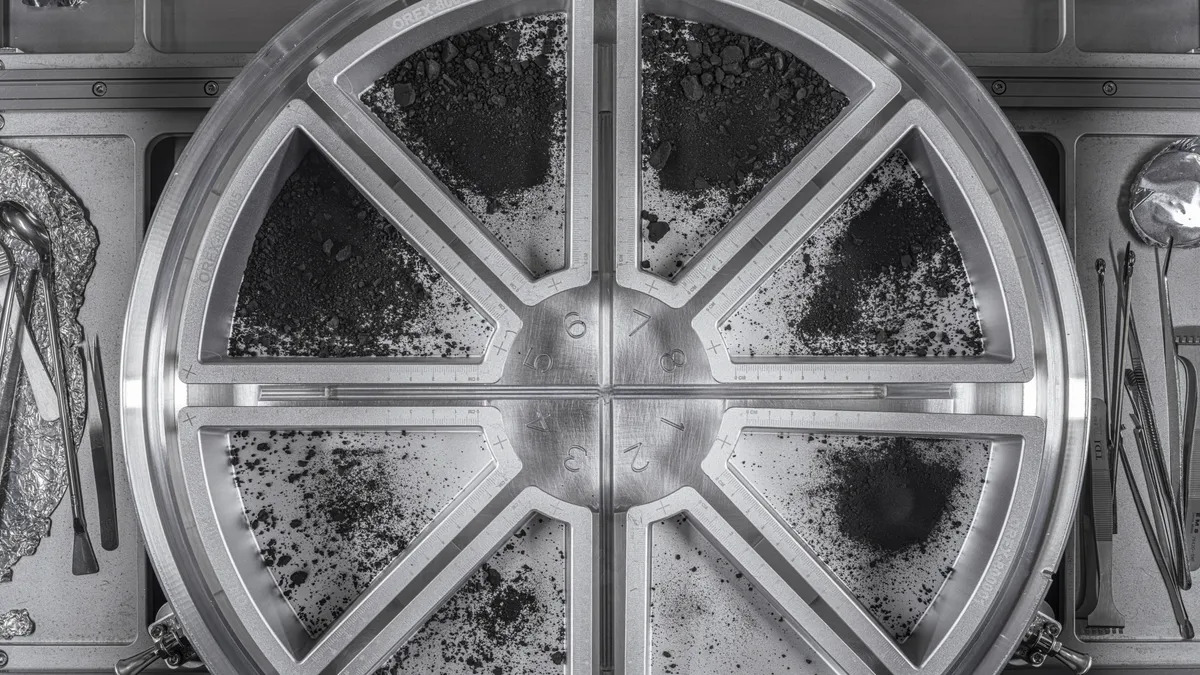
When the OSIRIS-REx mission to the asteroid Bennu was planned, the team aimed to collect at least 60 grams of material. This was a requirement for a successful mission. According to IFLscience, it seems that OSIRIS-REx has doubled its success, as it brought home 121.6 grams (4.29 ounces), the largest sample of extraterrestrial material from outside the Moon.
The return of the TAGSAM (Touch-and-Go Sample Acquisition Mechanism) was a real adventure. It was dropped by a spacecraft in the Utah desert and then transported to NASA’s Johnson Space Center. There, in a special clean room, they began to open it. The goal was to protect it from any possible earthly contamination.
In October, when a large canister was removed, rocks and dust weighing 70.3 grams (2.48 ounces) were found. The team hadn’t even gotten to TAGSAM yet… and failed. Two clasps in the system did not budge. So the team had to come up with an ingenious way and new tools that could be used to get to the samples without introducing contaminants inside. Last month, they succeeded, and finally the full sample was available.
It was announced that the Bennu material would be packaged in containers and handed over to researchers for study. Scientific institutions from around the world will have access to the material brought back by this extraordinary mission, and many researchers are already making plans for the precious cargo.
“We will transfer them manually. Either my colleague or I will go and pick them up from the Johnson Space Center,” Professor Sarah Russell, a member of the OSIRIS-REx sample analysis team at the Natural History Museum in London, told IFLScience. “But the Johnson Space Center is also happy to send them by courier. We actually had to rehearse this. Everything in this mission is very well rehearsed.”
Once it is in the hands of scientists, it will be analyzed and compared with meteorites and samples collected by the Japanese Hayabusa and Hayabusa-2 missions from the Itokawa and Ryugu asteroids, respectively.
“The first sample we’ll get will be a small vial with tiny pieces of powder, and we’ll pick pieces out of it and scan them with a CT scanner to look at their structure and get an idea of their composition,” said Professor Russell.
“Then we will put it in an electron microscope, which will allow us to map the elements. This way, we will see what elements are contained in it, and this will tell us what minerals we are looking at. We will perform X-ray diffraction, which will study the crystal structure. All of this will give us an idea of what kind of object it is.”
A catalog of what scientists can request will be available in a few months. But 70 percent of the sample will be saved for future analysis. This is similar to the 60 percent that was retained from Hayabusa-2 when it returned with samples of the Ryugu asteroid in 2020.

